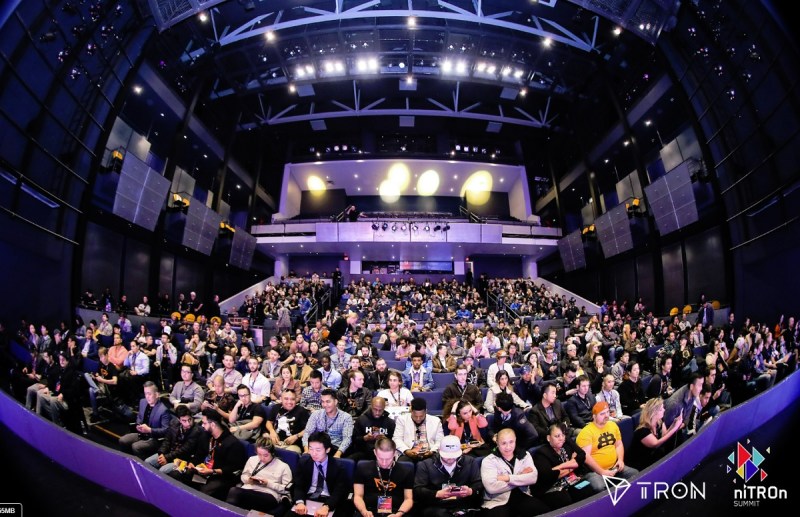Kevin Chou, who led Kabam in mobile games and Gen.G in esports, announced last week that he has created a blockchain gaming company called Forte (pronounced for-tay).
He and his cofounder Brett Seyler drew the team from Kabam, GarageGames, Unity, and Linden Lab. They have reviewed the rise of blockchain and cryptocurrency, and they want to create something that will make a bigger impact than many of the startups, scams, and crazy ideas we’ve seen so far in the crypto space.
I talked to Chou and Seyler in an exclusive interview, and they noted they are well aware of the crypto bust and the scams — and the impact they have had in creating skepticism about crypto among investors, gamers, and developers. But they are forging ahead with a plan to take advantage of blockchain — a decentralized immutable ledger — technology that has mostly been used to create secure and transparent cryptocurrencies.
“The emergence of free-to-play and cloud gaming let us deliver games on Facebook and on mobile,” Chou said in our interview. “But while we got hundreds of millions of people to play, a very small percentage paid. So the incentives for the game developer were very hard to align with the incentives for the players. It devolved into ‘pay to win’” schemes that left many users frustrated.
Chou will be a speaker at our GamesBeat Summit 2019 event on April 23 and April 24 in Los Angeles.
Here’s an edited transcript of our interview.

Above: Brett Seyler at Forte startup.
GamesBeat: Where is Forte going to be based?
Kevin Chou: We’re setting up in the Financial District in San Francisco. We have a small office near some of the other blockchain technology folks. It’s been good to get a new company off the ground and get it all started here.
GamesBeat: Tell me more about what you’re doing.
Chou: The high level is that we’re a bunch of game developers and game platform makers that are starting a new blockchain technology company. The key news we’re coming out with is that me and Brett and several other Kabam folks are getting together to start this company. We don’t have a funding announcement, which we typically like to do with these types of coming-out stories. We’re probably about two weeks away from closing a major partnership that we’re lined up to announce before GDC, with some big numbers attached to it.
Prior to that, the key new is that we’re forming this company, Forte. We’re putting a line in the sand. We’re an all-star team of people who’ve made a bunch of different games. We come from Unity and Second Life and RevPoint, and we’re coming together to start this new company with a focus on blockchain technology. We’re creating technology, funding other projects, and keeping some of our technology in-house as well.
GamesBeat: How many people do you already have?
Chou: Including engineers, it’s in the 70 to 80 range. Closer to 70 would be a good number to go with. We’re excited to pull this team together. It’s a bunch of people that Brett’s worked with in the past and a bunch of Kabam people coming together to form this. Brett has a background at Unity, as well as Garage Games and Torque on the game engine side, and he’s been making games for the last few years. We’re teaming up with the Kabam people and looking for the right project. It’s been fascinating to work with blockchain. We’re excited to get this off the ground.

Above: The NiTron Summit drew about 1,000 people.
GamesBeat: Are you more in an exploration phase now, or do you just have some things that are unannounced right now?
Brett Seyler: We’re definitely building some concrete product. There’s a lot of exploration happening in the space broadly, with emphasis in some use cases on better security or better scalability or higher volume and throughput. We’re watching a lot of those developments closely and trying to build the best possible practical solutions for game developers on top of what’s available.
Chou: Our goal was to, instead of coming out with something very specific, we’re building some pretty deep technology here. The whole blockchain space, as we’ve seen over the last year or so, can be very confusing. A lot of different disciplines are coming together, from cryptography to economics to what’s happening in tokens, different token pricing, to ICOs and regulatory stuff. Other game platforms have been started by what we call crypto natives.
What we see is an opportunity to bring together people who’ve built games and game engines before, who are excited about blockchain technology and the promise of what it can do for games, how we can use this technology for creating what are called peer-to-peer economies within games. We’re coming together to build stuff that we would use ourselves and that our friends in the industry would use. That’s the most different thing about this team coming together, being able to bring 70 of our former team members onto this project in a pretty rapid fashion.
GamesBeat: What are some of the advantages of blockchain for games that are particularly interesting to you?
Chou: From the highest level, we’re focused on creating the same type of incentives between the game developers and the players in a game. I’ve been making free-to-play games for 10 years. It was the emergence of free-to-play and cloud gaming that created this new business model, delivering that new business model through the cloud on Facebook and then mobile. Now people can use their consoles.
At the heart of it, free-to-play is very much about how you design a game. You get hundreds of millions of people to play for free, and then get a small percentage of those people to pay, and potentially pay a lot of money into the game. What happens over time, having made more than 50 of these games in my career, the incentives between what the developer wants — you have to run a business, pay your engineers and artists and creators — and how you manage the game economy — it’s difficult to get those things to line up correctly. Over time, free-to-play devolves sometimes. I’m certainly guilty of making games that have devolved into pay-to-win.
Blockchain is about how we align incentives so that the game developers and players are all much more aligned around the same incentives. It’s this concept of peer-to-peer trading, which we’ve seen in games before. It became very big in World of Warcraft, but it’s in many games before that. We have what happens nowadays in Counter-Strike with skin trading. But all of those items that are being traded — you have to trust that the company allowing that auction house or item trading will continue to allow it. What’s happening is the game developer doesn’t have the same incentive. If I’m playing Counter-Strike and I sell my skins to another player in the game, Valve isn’t making as much money on that particular item trade as they could be making on selling a brand new one.
The heart of it is that peer-to-peer trading in games has been generally tamped down on because the economics aren’t aligned for the publisher. They’re not making many every time these peer-to-peer trades are happening. As a user you trust that you own these items and you’ll continue to be able to sell them to other players in the future. But you’re really just putting trust into Valve or someone use to allow that to happen. At any time, Valve or any other developer can come down and say, “No, not anymore. That thing you thought you could sell to another player, you can’t do that anymore.”
Blockchain technology is about enabling that in a more secure way, but also making sure that the developer of the game is economically aligned to continue providing that service in a way that’s also aligned with the players and their interest in peer-to-peer trading.
GamesBeat: I notice in a fair amount of games that we see a lot of boycotts happen, late in the life cycle of the game, because the developer puts the squeeze on as players drop away from the game. They want to maintain their revenue stream, and the way they do that is introducing more items that are more expensive. They create an arms race for the remaining whales to spend money in order to stay competitive. Is that what you mean about devolving into pay-to-win? I notice this pattern more and more, where eventually you get to a revolt from players.
Seyler: There’s an interesting analogy to draw here between real markets that are governed by command and control mechanisms and a lot of centralization versus freer markets. Balancing markets, even in something as controlled as a game, can be really difficult. When developers are struggling to figure out which levers to pull, inflation is an easy answer. Players notice that, and that leads to frustration.
Game developers, for the most part, are trying to make the experience for new players as good as it can be, even while you have players who may have been playing for years and accrued a lot of power and assets in the game. They don’t have a way to share or redistribute what they have. From a developer’s standpoint it’s technically and operationally difficult to run a player-to-player market, mostly because of counter-party risks.
That’s one of the exciting things about blockchain. It resolves a lot of that technical risk. It has the potential to run these kinds of markets in a much freer way, a way that’s much more player-driven.
GamesBeat: Is that the big benefit of blockchain, then, that you can uniquely identify items and verify them through the blockchain? And it’s fairly secure. Nobody can steal it from you.
Seyler: The fundamental innovation is that players can transact with other players in a way that other people can’t stop. There will be, I think, a transition from the way we’ve been running games, in a very command and control style of economy, to a much freer way, which I think players will appreciate. It’ll outperform the existing free-to-play model.
Chou: When we talk about counter-party risk, let’s say I advertise that I own a Black Lotus, I sell it to you, and you pay me. Then I just run off with your money.
Seyler: Or it’s counterfeit. Maybe you made copies of it before you sold it and sold them all at the same time. Having one ledger, one record of what happened that everyone can trust, is really a huge innovation.
Chou: That ledger, what you trust, isn’t dependent on the game developer spending huge amount of resources to maintain it. That’s a big part of the innovation of blockchain in projects that exist outside of gaming. We’re excited about taking these things like Ethereum and helping game developers use the power of a distributed ledger to solve some of the problems in creating peer-to-peer economies in games.
Seyler: You’ve probably seen very competent and well-resourced game developers struggle to run markets of any kind. Even Blizzard, that everyone admires for their skill and attention to detail in the player experience, has not been successful in running a really player-driven economy. They’ve tried, but they’ve had to extend a lot of control to make sure of a good player experience. The Diablo auction house, or even the secondary market for gold in World of Warcraft and the way they run the WoW token economy, where transactions can go one way for the most part—if they move assets accrued in the game out to other games or other players in some form, it’s in mechanisms where Blizzard has control and sets the prices.
It’s no critique of Blizzard. They’re probably setting the bar as high as it can be without using these technologies. But there are real breakthroughs at hand, and I think it will make running that kind of market much easier.

Above: KSV eSports International founders Kevin Chou (left) and Kent Wakeford. They previously ran Kabam together.
GamesBeat: We get into the challenge of blockchain, where initially it was very slow at running transactions. Different companies have come along, like Tron, to speed it up. They say they can do many more transactions per second. But then you have a splintering of the market. It diminishes value in some ways.
Seyler: There’s kind of a trilemma of issues. Bitcoin aims for a very high level of security. It’s happy with reasonably low transaction volumes. It’s not built to buy a cup of coffee. There are tradeoffs you can make with the consensus algorithms that are used to synchronize records across all the people running Bitcoin nodes or Tron nodes. Those come with security tradeoffs.
We think that the best solutions for games are probably going to apply that kind of thinking and use a bunch of different approaches, depending on the use case. If there’s a large amount of value or a big movement of assets that doesn’t need to happen very often, those may be transacted with a system that’s more secure, but isn’t trying to hit Tron-like transaction numbers. But player-to-player, the equivalent of tipping people on Reddit, that’s not as consequential. Having more volume is probably the right answer. There are fundamental issues to consider when trying to figure out what approach to take for a given use case or systems economy.
Chou: A big part of what we’re doing at Forte is building on a whole set of technologies to help demystify this for the game developer. We help game developers without having to understand all the different security and consensus algorithms and latency issues and throughput issues. They can work with us to help secure what they’re trying to do from a game economics standpoint, without having to go super deep into the technology. We’re going to solve that technology problem for game developers.
GamesBeat: What about the challenge of choosing which currency to use, which token? There are, what, 2,000 tokens out there now? How do you decide which ones to use and how to use them? Do you have to have your own wallet for a game?
Seyler: Related to these issues we’re surfacing about volume versus security and transaction latency, the token will probably need to serve the use case best. We think there’s no one token that’s best for all the things game developers will want to do with cryptocurrency and blockchain-backed items in their games. It’s going to depend on a particular system.
Just like games now—games have soft currencies that aren’t rigorously tracked. People aren’t purchasing them with real money or selling them with real money. That’s okay, because they’re less consequential. They don’t need to move as fast. But if you’re making a premium currency, you have more steps and a certain amount of latency to complete that kind of transaction. We think the same will apply to what to choose for a token or a token protocol in games.
We’re not trying to pick winners in this respect. We’ll tailor the best solutions to what a game’s particular needs are.
GamesBeat: There was also the problem related to mining and how to pay for the blockchain processing.
Seyler: A lot of the user experience in transacting with cryptocurrencies is pretty painful and scary right now. That’s a big part of our focus. We have to make these things easy. We have to make them feel safe. There’s work to do around the way wallets work. There’s certainly work to do around the way consensus is achieved. Mining makes sense for consequential transactions, but not necessarily for every transaction in a game.


